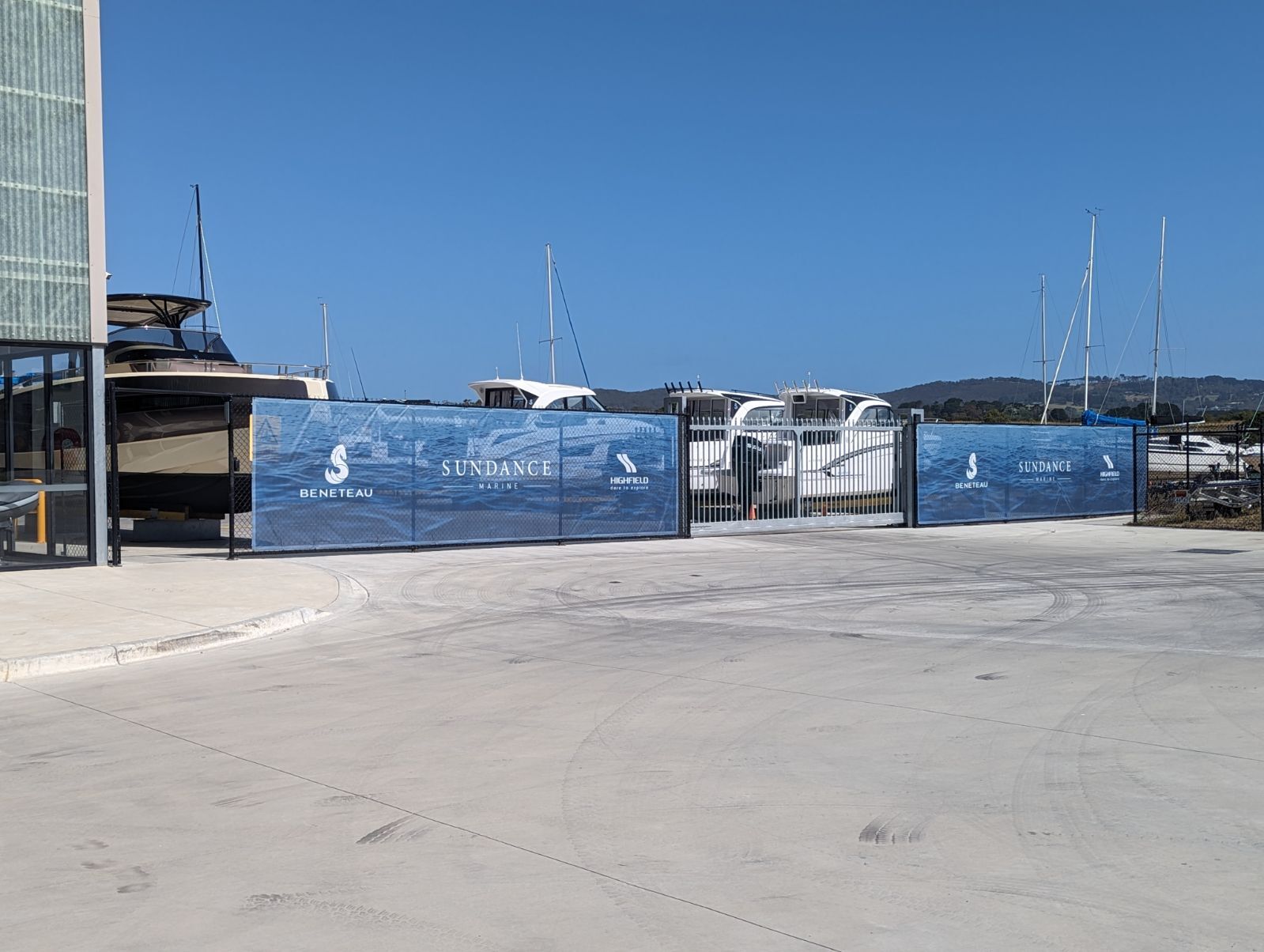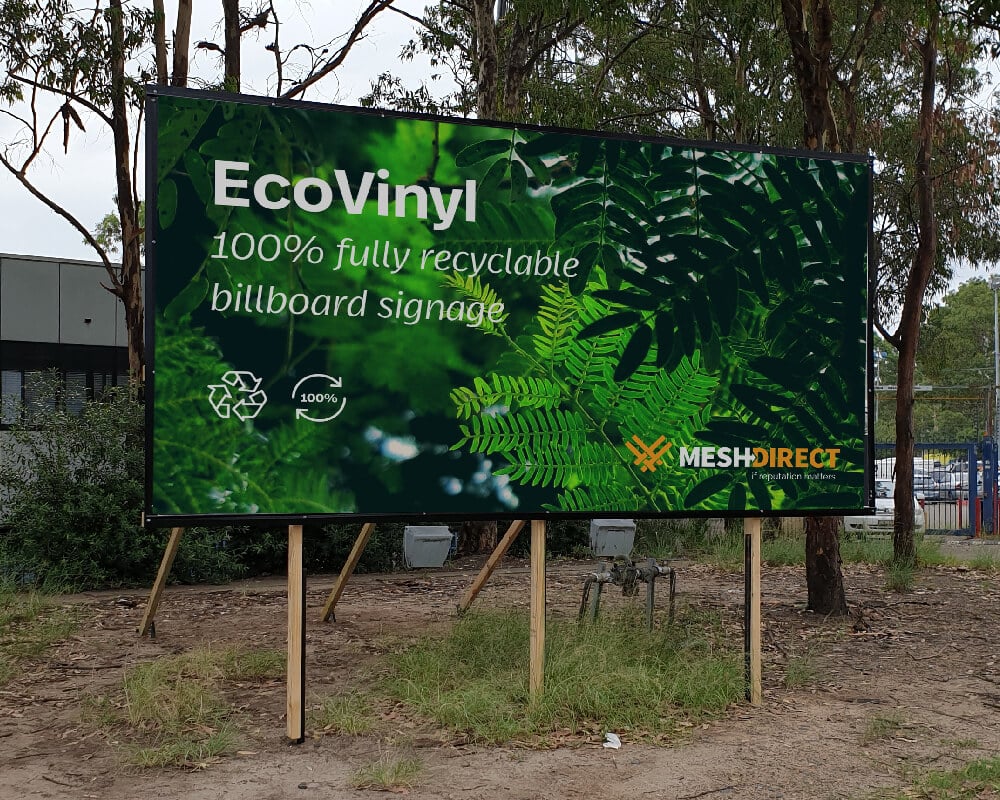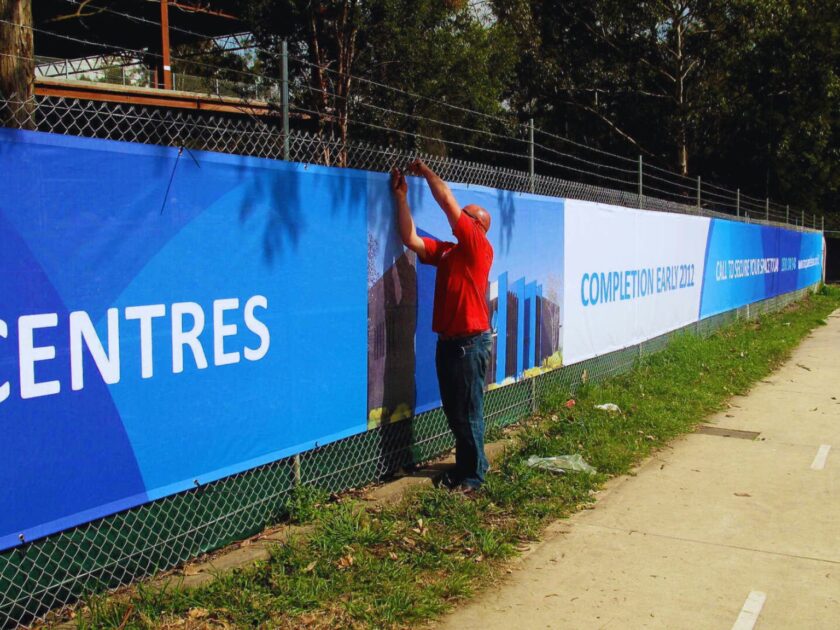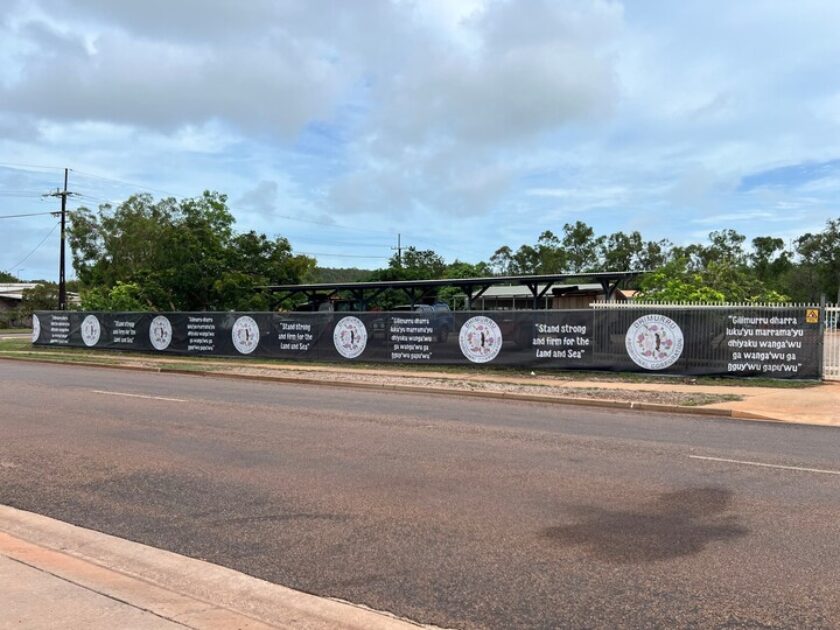Everything You Need to Know About Statutory Signage
 14 February 2025
14 February 2025 5 mins read
5 mins read
Statutory signage plays a critical role in maintaining safety and compliance in Australian buildings. These signs are essential for ensuring the safety of visitors, guiding emergency responses, and meeting legal requirements. In this blog post from the signage experts at Mesh Direct, we’ll delve into the meaning of statutory signage, the Australian standards that govern it, and the 5 main types of statutory signs that you might come across.
What is the Meaning of Statutory Signage?
A statutory sign refers to a sign required by law to ensure compliance with safety and operational regulations of a building. These signs are often used to guide occupants and emergency services in commercial, residential, and industrial buildings. Statutory signage can include fire safety signs, exit signs, and many more.
In Australia, statutory signage is designed to provide clear instructions and information. For instance, fire safety signs, like those with a fire hose reel or fire hydrant, help people locate critical firefighting equipment. Similarly, wayfinding signage ensures convenience, smooth navigation and accessibility for all building users, including the visually impaired.
Implementing statutory signage in a building doesn’t just ensure safety and convenience for its users, it’s required by law. Failure to install the correct signage in accordance with Australian standards can result in hefty penalties, jeopardising business operations and public safety.
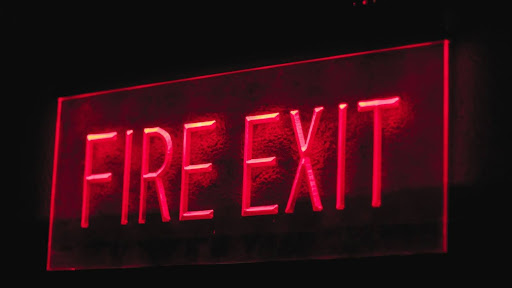
What are the Australian Standards for Statutory Signage?
The Australian standards for statutory signage have been established to ensure consistency, clarity, and functionality across the country. These standards are defined in various guidelines, including the Building Code of Australia (BCA) from the National Construction Code. These regulations mandate the design, installation, and maintenance of safety signs in buildings to enhance compliance and safety.
Key statutory signage requirements include:
-
- Design Compliance: Signs must be designed to suit their intended purpose, such as guiding emergency services or indicating the location of fire safety equipment. This includes using standardised colours, symbols, and text to ensure visibility and readability.
- Installation in Accordance with Regulations: Signs must be installed at appropriate locations as specified by the standards and regulations.
- Use of Braille and Tactile Signage: For the visually impaired, tactile signs, including Braille, are mandatory in specific areas such as elevators and exits to ensure accessibility and safety.
- Durability and Maintenance: Statutory signage should be constructed from durable materials that can withstand environmental conditions and remain legible over time.
By adhering to these Australian standards, businesses can ensure compliance, protect building occupants, and avoid legal penalties.
5 Main Types of Statutory Signs
The category of statutory signage includes a wide range of signs, each with their own specific purpose. Here are the five main types of statutory signs:
1. Fire Safety Signs
Fire safety signs are critical for guiding building occupants and emergency responders during a fire. These include:
-
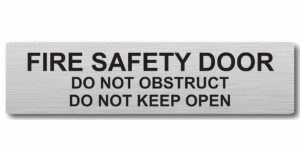 Fire Hose Reel Signs: Indicating the location of hose reels for fire suppression.
Fire Hose Reel Signs: Indicating the location of hose reels for fire suppression.- Fire Hydrant Signs: Directing to the nearest hydrant.
- Fire Safety Door Signs: Ensuring fire doors remain unobstructed and operational.
- Sprinkler Booster Signs: Indicating connections for sprinkler systems to aid emergency services.
Properly installed fire safety signage ensures quick access to equipment and compliance with fire safety regulations.
2. Exit and Wayfinding Signage
Exit signs and wayfinding signage guide people to safety during emergencies. 
These signs must be prominently displayed in all buildings and include illuminated exit signs and directional signs leading to safe egress points.
3. Parking and Amenity Signage
Parking signs and amenity signage help manage traffic and accessibility within commercial and public spaces. 
Disabled parking signs, for instance, ensure compliance with accessibility regulations and provide designated spaces for individuals with disabilities.
Amenity signage, such as restroom indicators are important for safety, convenience and usability.
4. Regulatory and Compliance Signs
Regulatory signs communicate specific rules and regulations within a building. These include: 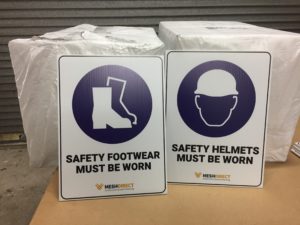
-
- Stop Signs: Enforcing traffic control in a carpark
- Main Switchroom Signs: Marking locations of electrical switchrooms.
- Safety Signs: Highlighting hazards and precautions, such as “Danger: High Voltage” or “Keep Clear” signs.
5. Tactile and Braille Signage
To accommodate the visually impaired, tactile signage with Braille is mandatory in many areas. 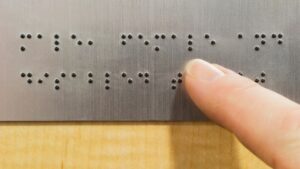
These signs are commonly used for door labels, exit routes, and amenity locations, ensuring inclusivity and adherence to Australian standards.
How to Ensure Compliance with Statutory Signage Requirements
Compliance with statutory signage requirements is essential for safety and legal adherence. To achieve this, businesses and building developers must:
-
-
- Conduct Regular Audits: Assess signage to ensure it meets the latest Australian standards and statutory requirements.
- Engage Professional Signage Providers: Work with experts who design signs to suit specific compliance needs and install them in accordance with national construction code guidelines.
- Maintain and Update Signage: Ensure that all signs remain legible, properly installed, and reflective of any changes in statutory requirements.
-
Statutory signage is more than a legal obligation—it is a vital element of building safety and functionality. By following the national building regulations, businesses can create a safe and compliant environment for all.

Our Statutory Signage Solutions
Mesh Direct offers a comprehensive solution for your statutory signage needs. Our extensive product range includes durable, high-quality signage designed to meet standards and suit a variety of applications. With features such as UV resistance, fire-retardant materials, and waterproof designs, all Mesh Direct products are built to withstand the toughest of Australian conditions.
We provide easy installation and fast turnaround times, ensuring compliance and convenience for builders, developers, and business owners. From digital prints to sleek acrylic lettering and Braille tactile signs, Mesh Direct guarantees a professional, budget-friendly solution that fulfils all statutory requirements.
For a hassle-free statutory signage solution, choose Mesh Direct. Speak to our team today and ensure your building is compliant, safe, and impressive!
